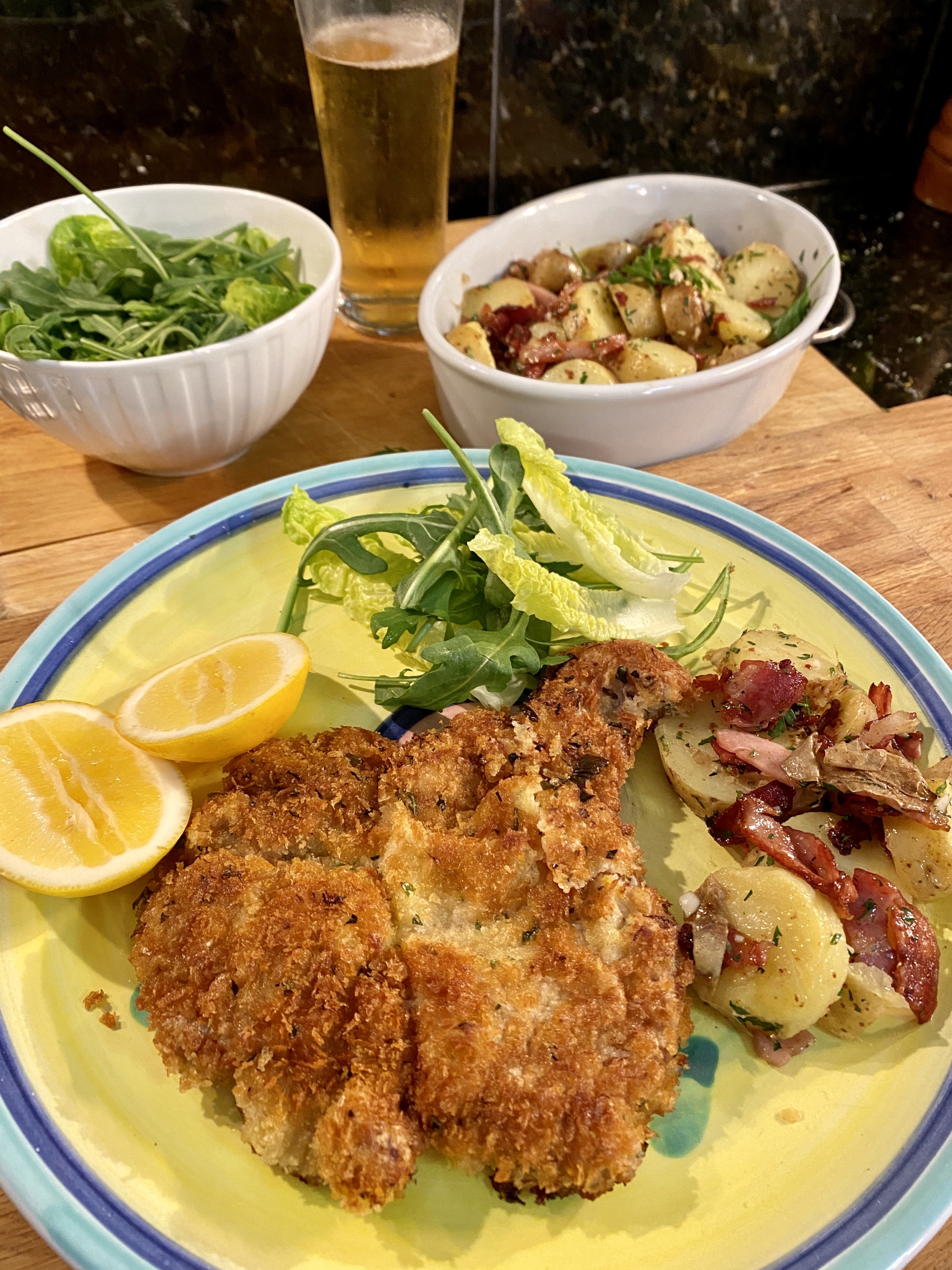
This German Schnitzel and Potato Salad is made with pork, not veal. “Wienerschnitzel” is a geographically protected term in Germany and Austria and is always made with veal, though it does not come from Wien (Vienna). German Schnitzel or Schweineschnitzel is made with pork in the same way. The technique of breading and frying thin cuts of meat is attributed to the Romans from around 1 BC.
Potato Salad
Lyndey’s Note: Panko are Japanese breadcrumbs. They are made from crustless bread, making them light and flaky. They also absorb less oil and can be found in the Asian section of all good supermarkets.

Keep in touch!
